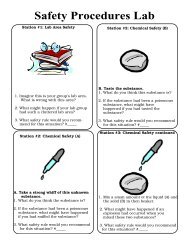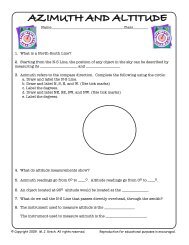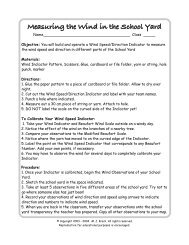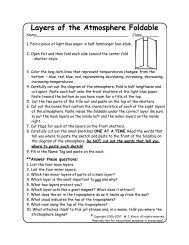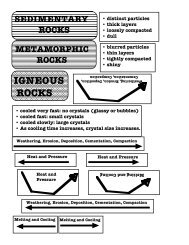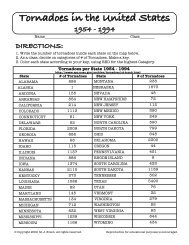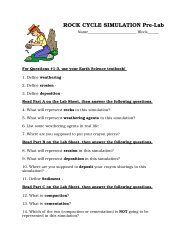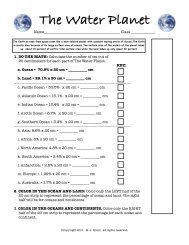NEBULAR THEORY - Marcia's Science Teaching Ideas
NEBULAR THEORY - Marcia's Science Teaching Ideas
NEBULAR THEORY - Marcia's Science Teaching Ideas
- No tags were found...
You also want an ePaper? Increase the reach of your titles
YUMPU automatically turns print PDFs into web optimized ePapers that Google loves.
<strong>NEBULAR</strong> <strong>THEORY</strong>- Origin of the Solar SystemName_________________________________________________ Block ______Earth’s origin has been debated for a long time. Many questions are stillunanswered. Probably the most widely accepted theory at present in theNebular Theory. Study the following diagrams and pages 64-66 in the PrenticeHall Earth <strong>Science</strong> textbook. Decide which stage occurred first. Place a 1 onthe line under that diagram. Place a 2 under the diagram for the next stage.Use the following words to label each stage.-nebula -protoplanets forming -solar system-protosun forming -moons forming -spinning disk________________ ________________ ________________________________ ________________ ________________
SUMMARY QUESTIONS:Use the Prentice Hall Earth <strong>Science</strong> textbook. Pages 64-66.1. Define Nebular Theory.2. List the six stages of the nebular theory in order from beginning to end.3. What force causes the gas cloud (also called a nebula) to begin to contract?4. As the nebula begins to shrink and spin, what else does it begin to do?5. What begins to take shape in the center?6. At what point does the protosun become a star?7. What do the largest clumps surrounding the protosun begin to form?8. How do the inner protoplanets differ from the outer protoplanets?Why?9. As the newly formed planets begin to cool, what do the smaller clumps beginto form?10. How does the Nebular Theory explain why Pluto is so different from theother outer planets?11. What is the asteroid belt?Where is it located?How does the Nebular Theory explain the formation of the asteroid belt.?12. Near the very edge of the solar system, astronomers think that otherclumps that did not form into planets (or moons or asteroids) form a huge icycloud called the Oort Cloud. What do astronomers think this might be thehome of?







